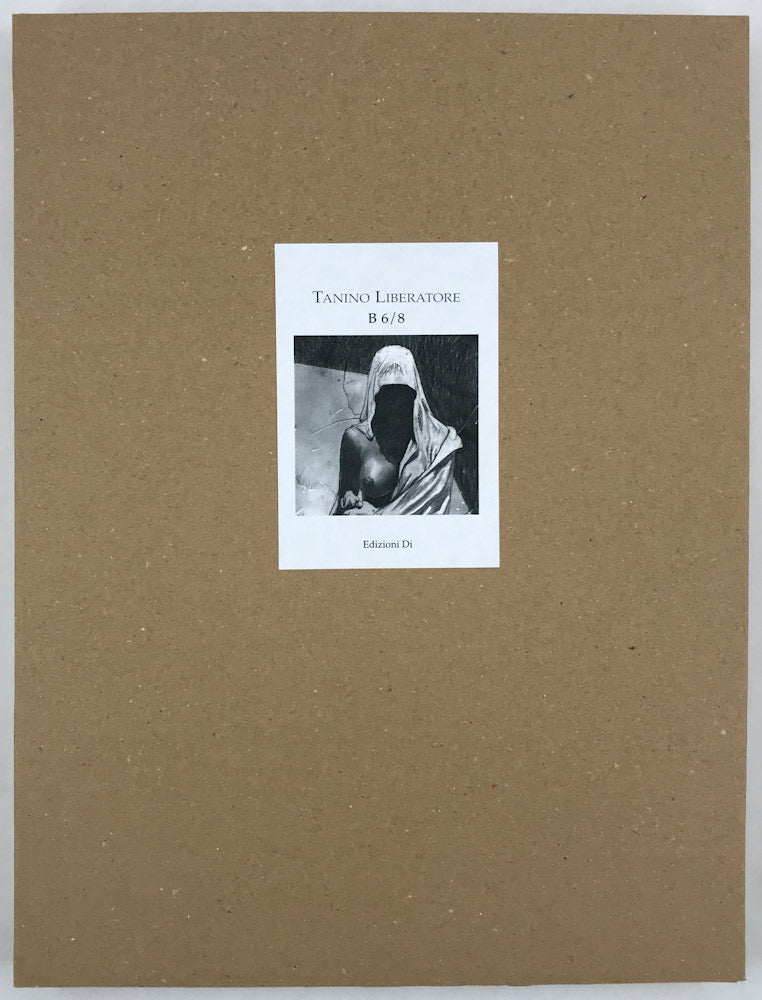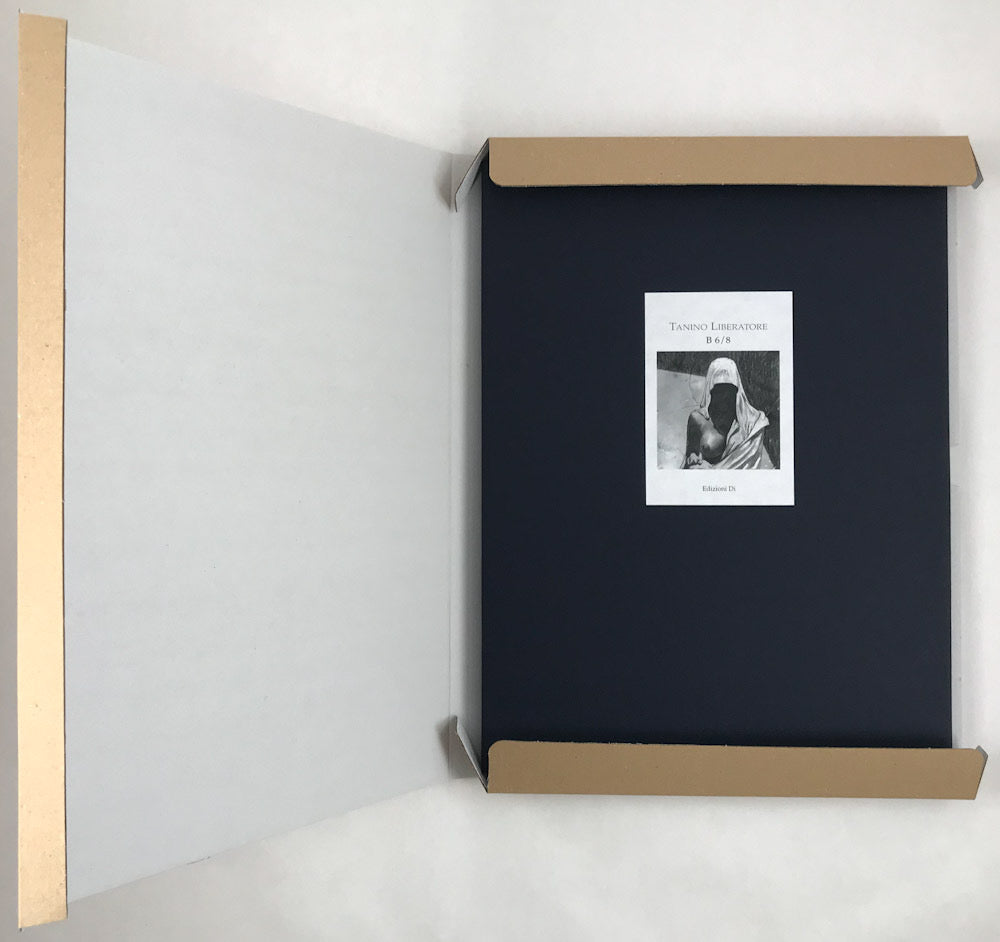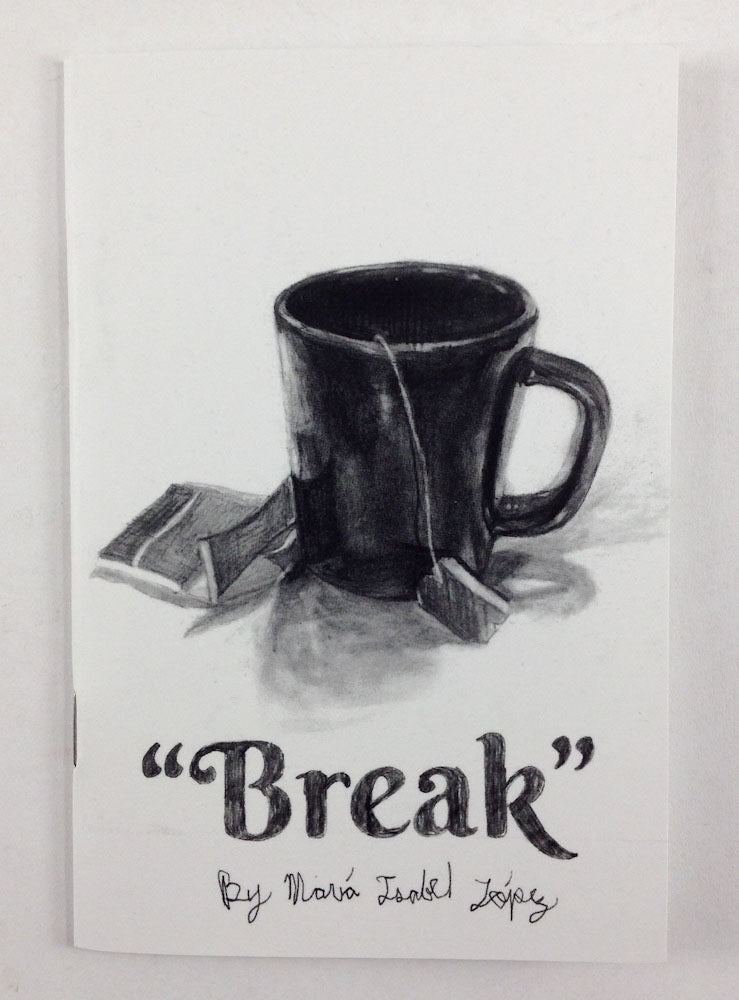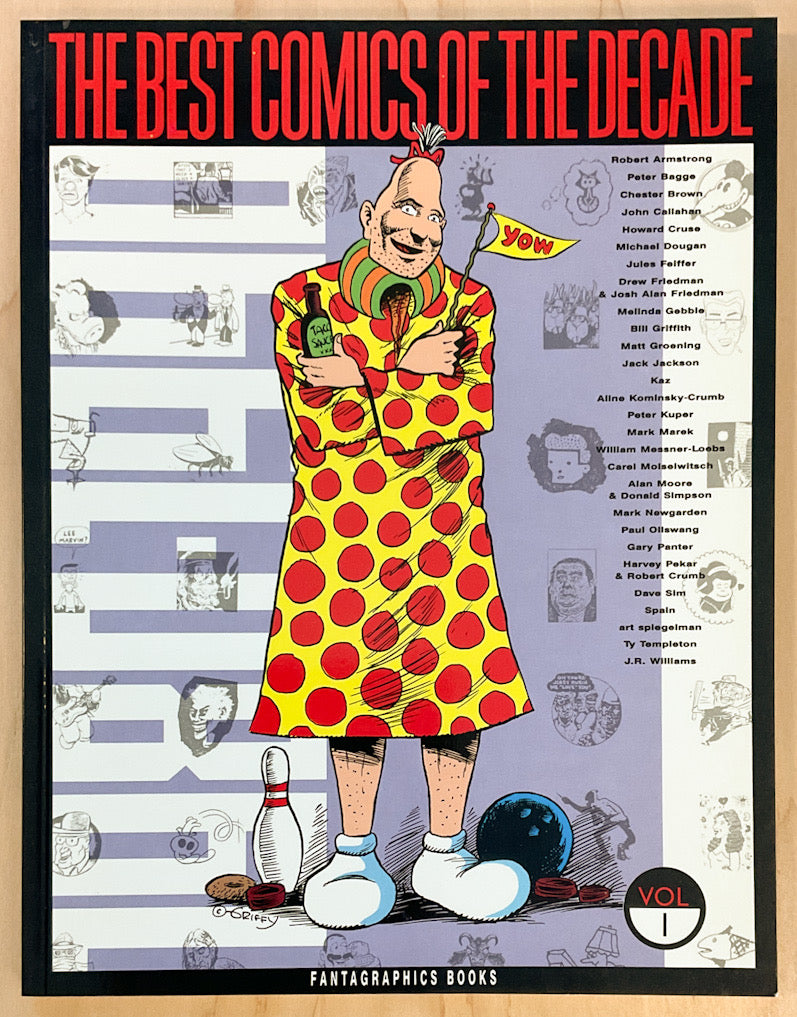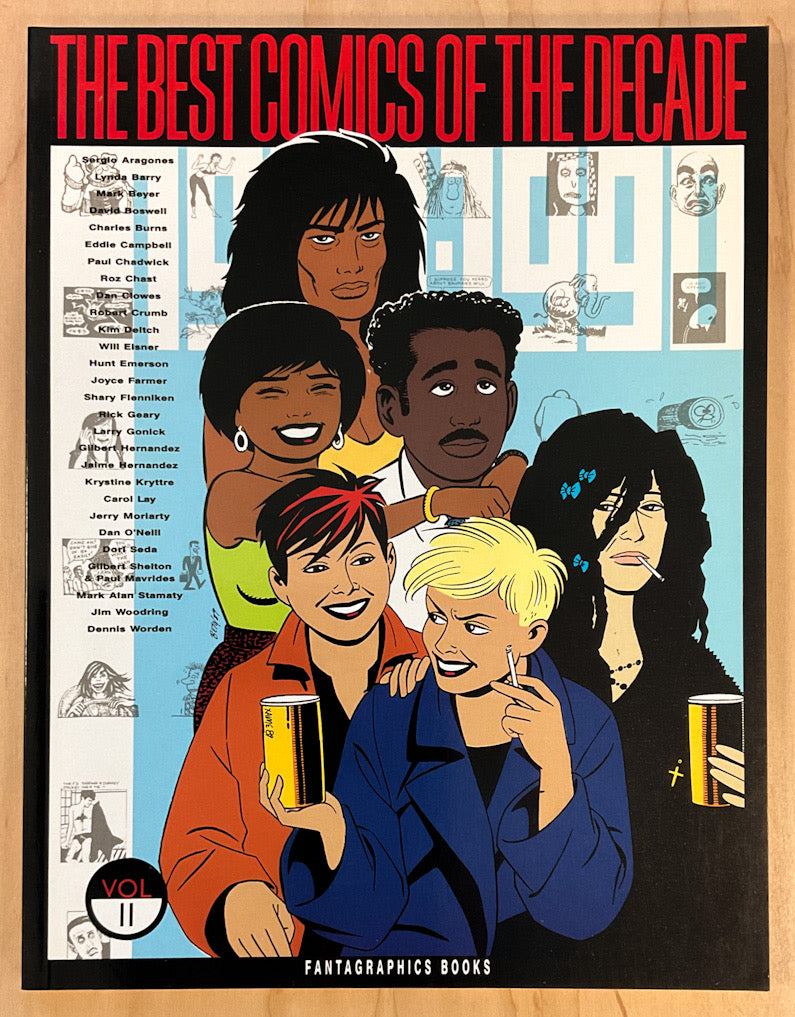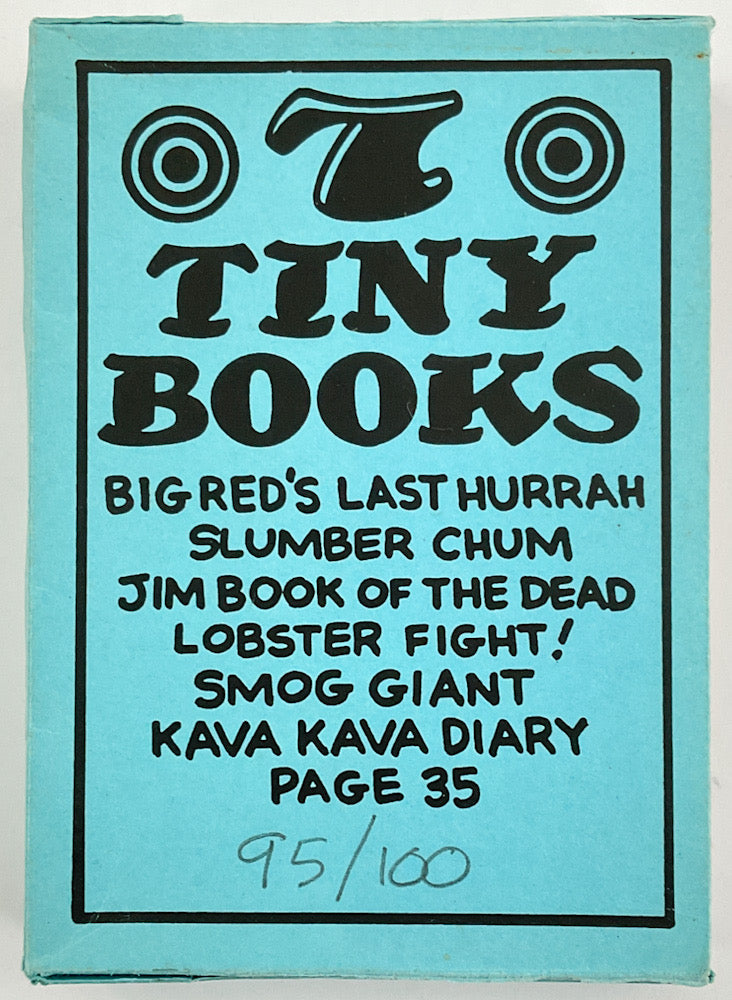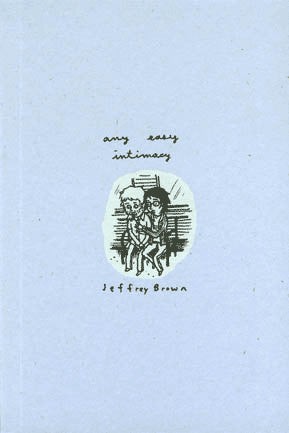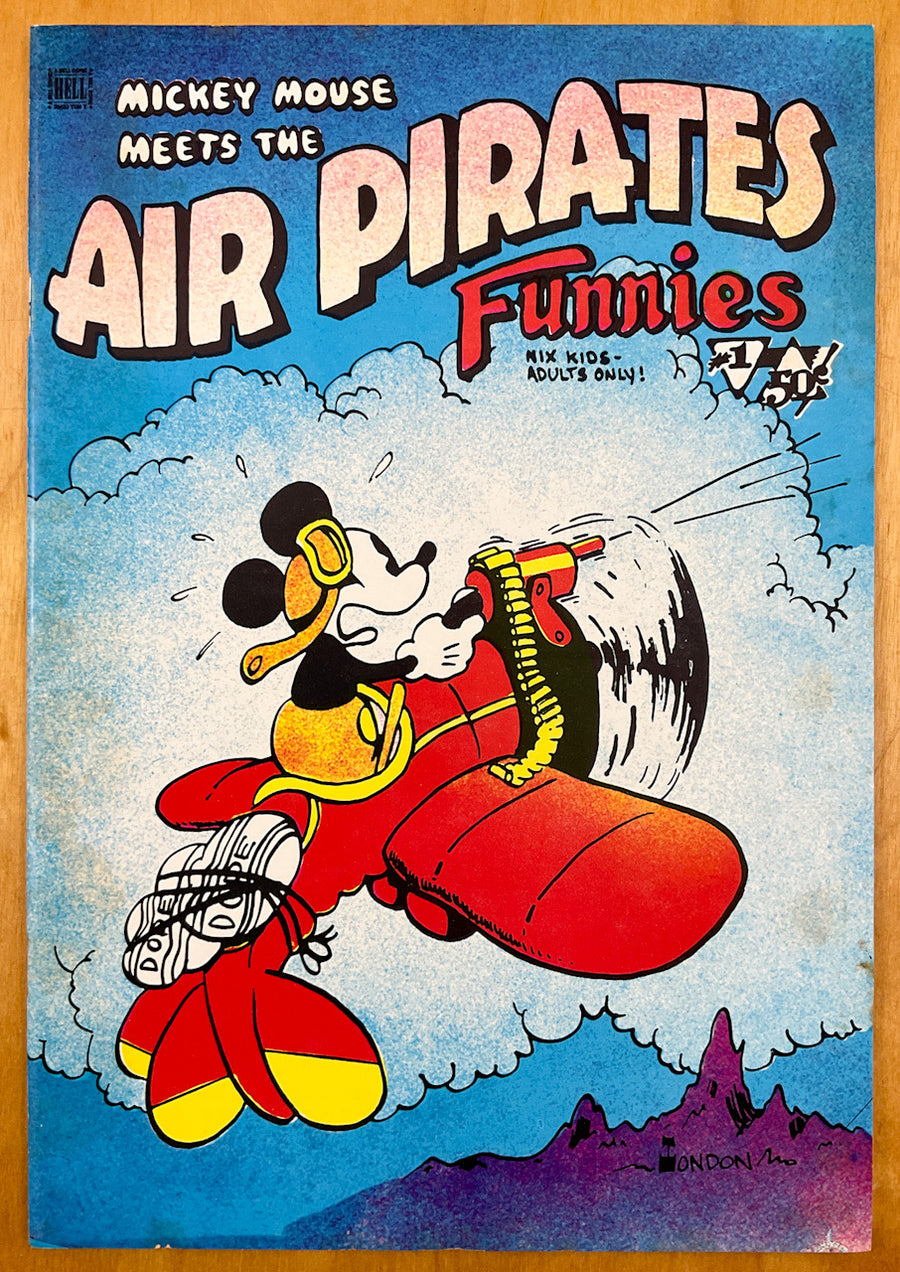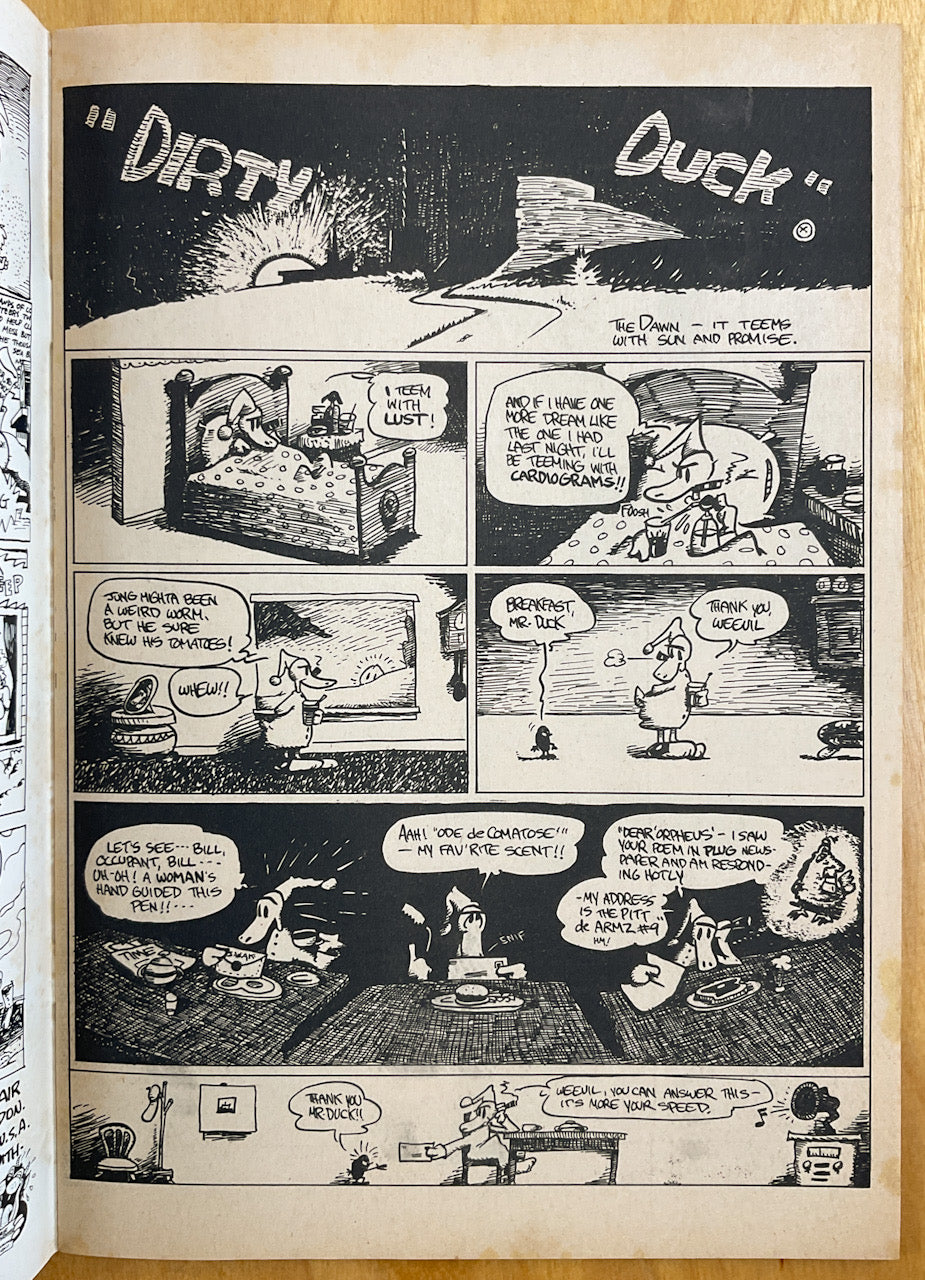A pristine copy of this very delicate handbound comic. This copy was stored in a manila envelope since 1982 and not exposed to the elements. Rarely found in this high grade condition.
Published by RAW in 1982. This was Raw One-Shot #1.
A tabloid-sized comic magazine printed in black & white on newsprint with duotone covers. Attached at rear to corrugated cardboard covers, as published, with paper label on front and black tape spine.
Jimbo -- beguiling, spike-haired, heroic -- attempts to survive in a disintegrating world: "It's them or me," says Jimbo, "and I'm not sure which. I don't want my brain warshed." He is a small-town boy besieged by the plagues of modernity...
From Bill Kartalopoulos' RAW History:
Jimbo was the first "Raw One Shot," [a dedicated series of] artists' book of comics published by Raw Books and Graphics. The book's interiors were printed on newsprint and the cover was constructed of corrugated cardboard. Black binding tape and a two-color Jimbo sticker were applied by hand. Greil Marcus contributed the book's introduction.
Mouly: It was part of the intention to publish books that needed to be published. Gary was one of the artists that best exemplified the core of why we were doing Raw. He was someone that was doing interesting work in comics form that wasn't widely published. And he could produce more than what we could do in one or two issues a year, and he had done some in Slash, so there was a body of work that could be collected.
I don't remember the chronology directly, but somewhere around then is Three Mile Island, and fear of a nuclear disaster. That's very present in the Jimbo strip... We were scared! We were doing something with the intention of having a future, and meanwhile, there were politicians going crazy on us, and Reagan was talking about the evil empire, and the official policy was still MAD: Mutual Assured Destruction. I don't know when Three Mile Island was, it was traumatic, and we had all sorts of alerts from the radio to find brick walls and bottled water... One forgets that there was this moment of going to your bunker, like, hide below your desk and hope for the best! Where Gary was very much responding to this, and that work felt urgent.
It was described as a post-nuclear hardcover. Well, the world was falling apart. I mean, to me the central image in the book is "Can you stop the world from blowing up?" "N-n-n-n-no!"... That moment was very intense and that didn't seem right collected on beautiful velveteen matte paper. We wanted to keep something of the newsprint, of the urgency, of the ephemeral nature of throwaway newspaper. In a way it was a book that you would find after everything fell apart... one thing that he enjoyed was the fact that this book involved handwork.
I had gotten cardboard scored to the right dimensions... Most of the craftsmen I've worked with didn't enjoy being challenged, but this one was a difficult one because basically I got the binder to set up this machine that was not meant for this at all, to stitch cardboard. To stitch newsprint into cardboard. For the newsprint I went to a schlock printer... which was a web press, which I had never used before. And you don't control quality on a web press. All those were choices. I was forcing myself to live with the consequences of the choices, but also Gary's work could withstand this. I never would have tried this on a Joost Swarte or on many of the other artists, their work was too fragile. But one of the things about Gary's work is that it's indestructable.
We set up those signatures from the web printer that was more used to free supermarket handouts than art books. And then we, on the chain, we had them stitch it -- the piece of cardboard had been scored -- so then by hand we had to fold it. And then after that... then we put a piece of tape, which we then had to cut, and then we put the sticker on. And I think the sticker I had to print somewhere else as well. We didn't do that many of the Jimbo book. I can't remember, at this time we were up to 5000 of Raw, maybe 7500, I can't remember, so we must have done, I don't know... maybe 2000, 3000 of the Jimbo book. It still is a lot.
Spiegelman: For everybody we published, we'd be pain in the ass. For Gary as well, encouraging a more specific narrative trajectory. For better or for worse, it was always fun to see how [people] ignored it. I remember putting together the Jimbo book, of the pages he had done for Slash, and adding more things into that where I'd say, "You know, there are twelve places where you just totally drop the continuity of an idea, maybe you'd wanna consider doing some pages to pull some of that back together." And then he'd do it, but while solving the problems that were specifically listed, he'd create fifteen other narrative disconnects in the course of the page, and I was like, "Well, maybe that's great." We were glad to see it.
Condition & Attributes
Publishing Information
Physical Description
We ship domestically via USPS Media Mail and Ground Advantage. Faster options, such as Priority Mail, are available.
We ship internationally via USPS Priority Mail International, FedEx, and DHL Express.
You may review all the shipping options for your address at checkout prior to finalizing your order.
We have over 27 years of experience packing and shipping collectible books. We pack every order so it will arrive at its destination in the same condition it left our store.



